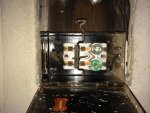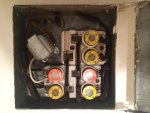ggunn
PE (Electrical), NABCEP certified
- Location
- Austin, TX, USA
- Occupation
- Consulting Electrical Engineer - Photovoltaic Systems
I feel your pain. There is a run of medium voltage distribution lines alongside my house and my studio is in the garage on the side of the house closest to the lines. Single coil pickups through a high gain amp and/or distortion and overdrive howl like banshees if I stand holding the guitar parallel to those lines. Dynamic mics are not so bad, but the noise is there if I listen closely. I had the utility company come out with their gaussmeter, and they confirmed that the lines are the source of the noise, but there is nothing they can do about it.
Grounding won't help. Power conditioning won't help. Running off a UPS won't help. Balanced lines and cavity shielding do help somewhat, but the components at the end of the cables and the faces of the pickups are exposed to the noise and pick it up no matter what. The middle pickup on my Strat is RWRP, so in the #2 and #4 positions the noise is greatly diminished.
I do what I can, but what's left I just have to live with.
Grounding won't help. Power conditioning won't help. Running off a UPS won't help. Balanced lines and cavity shielding do help somewhat, but the components at the end of the cables and the faces of the pickups are exposed to the noise and pick it up no matter what. The middle pickup on my Strat is RWRP, so in the #2 and #4 positions the noise is greatly diminished.
I do what I can, but what's left I just have to live with.



